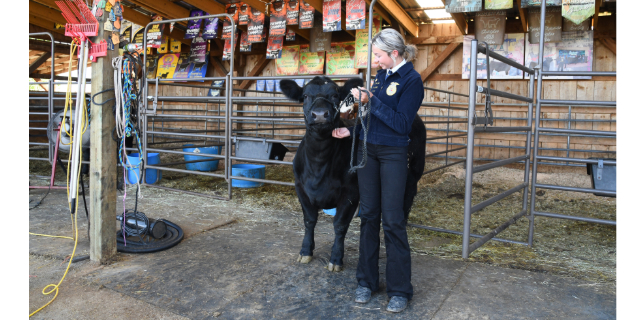Oregon wants its regional universities to innovate financially — SOU is already working on that
Published 6:30 am Tuesday, July 18, 2023

- Rick Bailey, president of Southern Oregon University, and university sustainability director Becs Walker walk among university solar panels. Southern is installing solar arrays on campus to save on electricity as one strategy in a multi-pronged plan to fix the school’s budget woes.
Three years from now, the Southern Oregon University campus in Ashland could have a crop of unlikely new residents: hundreds of senior citizens, living in a housing complex on the site of an old dorm.
Opening senior housing is one prong of the school’s plan to rethink its financial model and stave off a projected budget deficit that could climb to $14 million over the next several years. The university also plans to create a new business district and has leveraged millions in state and federal funds to build solar infrastructure that will help it save on electric bills.
“SOU must change the way it does business because the status quo is structurally flawed,” reads the university’s budget plan, which laments its historic reliance on state dollars and tuition revenue to stay afloat. “Students and their families have become overburdened, and we must not allow skyrocketing tuition to be the answer to current and future fiscal challenges.”
To be sure, SOU’s effort to rectify its budget has been painful at times. Trustees voted to cut the equivalent of 83 full-time jobs in a cost-saving measure this spring. But its SOU Forward plan signals the university’s willingness to try new things to become financially solvent, something the state is now asking of Oregon’s three other regional universities and Portland State University as well.
Lawmakers set aside $25 million this session for SOU, Oregon Institute of Technology, Western Oregon University, Eastern Oregon University and Portland State to innovate around budget stability.
This year, the state’s Higher Education Coordinating Commission will divvy up $6 million that the five universities can spend to test new methods for balancing their budgets. At the same time, the commission will work with an outside contractor to analyze university financial standings and issue recommendations to lawmakers for how the schools can become sustainable long-term.
During next year’s legislative session, the commission can ask for the remaining $18 million for universities to carry out their innovation plans, commission director Ben Cannon said.
“Twenty-five million should go a long way in helping these institutions pivot,” Cannon said. “If a lot of funding ends up being used in ways that don’t prove fruitful for financial sustainability, I think we’ll feel like we really fell short.”
A point of access
Oregon’s technical and regional universities are an important point of access to higher education for students who want to stay close to home or want a smaller environment than at Oregon’s 23,000-35,000 student flagship universities, Cannon said. Over the last decade, the schools have shown various degrees of budget troubles as enrollment has stagnated or dropped and costs have increased, he said.
Enrollment fell at each of the regional universities during the height of the pandemic, commission data shows. By fall of 2022, it had stabilized at two but not returned to pre-pandemic levels. In contrast, the University of Oregon and Oregon State posted fall 2022 enrollment numbers that eclipsed enrollment in 2018.
Small universities feel enrollment changes more deeply than the flagships five times their size, said Nagi Naganathan, president of Oregon Tech, which has about 5,000 students at its campuses in Klamath Falls and Wilsonville. Oregon Tech doesn’t often have the financial margins to tackle new projects, Naganathan said. He sees the innovation grants like an angel investment to help the school do that.
“Here is an opportunity to experiment, which I’m very excited about,” Naganathan said. “I don’t look at it as simply survival — it is about creating new and better things for our students.”
Universities say the money will let them dust off ideas that have been sitting on shelves waiting for funding and allow them to collaborate in new ways. Plans for the money are far from concrete, but officials say they’ve discussed the possibility of starting a common application that would let students apply for several state schools at once. They have also weighed granting admissions to Oregon high school graduates without even requiring them to apply.
“Frankly, part of the solution is that we have to work as a team,” said Ricardo Lujan Valerio, government relations director for Western Oregon University. “What are some of the initiatives that we can activate for these dollars collectively that will help us gain that sustainability and meet the goals of the students in the state?”
Western, like SOU, approved a round of budget cuts this past year to help balance the bottom line. The $5 million reduction had a significant impact on full-time employees, Valerio said. His team is looking at whether innovation dollars might beef up support services that help keep students enrolled, Valerio said, or help pay for the school’s new occupational therapy doctorate program that is projected to be a significant revenue generator.
Naganathan, at Oregon Tech, said the grants might help the school attract more applicants by beefing up its already robust high school programs that serve almost 2,000 students in 79 high schools around the state. The funds could also help expand the capacity at the school’s behavior analysis clinic that helps children with autism or at its dental hygiene clinic, which currently only serves about 50% of the clients who want an appointment.
“It’s not just about the revenue from the clinic. Our students get to have exceptional opportunities … to work on real life patients,” he said. “That is good for the students and good for the community.”
Though Portland State University is quadruple the size of many regional universities with over 22,000 students at last count, its finances are in far worse shape than the other large universities’. PSU projects continued enrollment declines after the pandemic weakened a critical flow of students from Portland Community College, and it just approved $25 million in budget cuts.
Vice President for University Relations Kevin Neely says his institution could use the money to study how Portland State can better serve its diverse student body, then work to retain those students. Or it could partner with Portland Community College to study why some students don’t make the jump to university, then work to capture those new recruits. The university might also explore how it could collaborate with other institutions for services like payroll. At the administrative level, he said, just one person is in charge of payroll. If that person is sick or has a family emergency, the institution has to scramble. A shared payroll service might allow the universities to cut staffing costs and have some backup.
“There’s a real need to be thinking creatively by not just Portland State, but I think higher education across the nation, on how to serve a new, much more diverse population of students,” Neely said. “This funding is going to allow us to dig in, identify and I’d say strengthen the current work that’s being done and identify new opportunities in collaboration with our sister institutions.”
‘SOU Forward’ plan
Southern Oregon University’s innovation plans are well underway after trustees approved the “SOU Forward” template this spring. President Rick Bailey anticipates the state grant could help pay for a planned change in IT systems. SOU is transitioning to Workday, a platform whose glitches have created headaches for state agencies, but that could save the Ashland-based university nearly a million dollars each year.
Colleges and universities tend to be risk-averse bureaucracies, Bailey said. But as students increasingly bear the brunt of higher education costs, he said, the old model of paying for higher education has become unsustainable.
“We are going to have to, as institutions, become a little more entrepreneurial, and a little more risk tolerant, so that we can challenge assumptions, change models and protect students more,” Bailey said.






